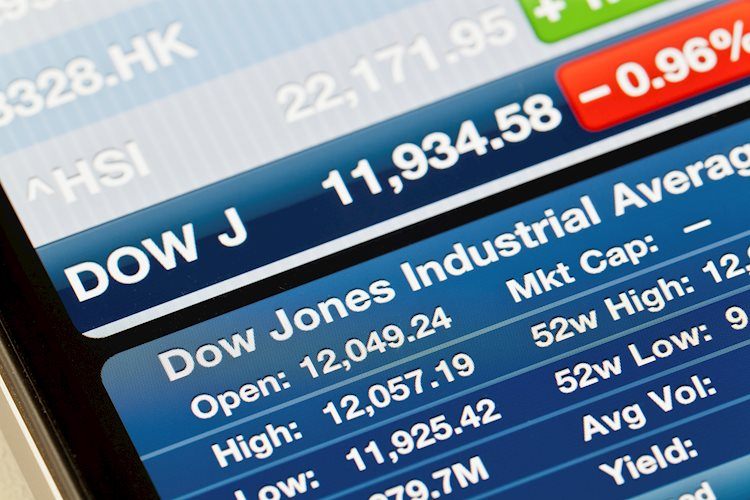- The Dow Jones slipped back below 43,000 on Tuesday.
- Markets are softer on Tuesday after ripping into new records this week.
- Weak points in tech sector are leading equities lower despite broad earnings beats.
The Dow Jones Industrial Average (DJIA) trimmed lower on Tuesday despite starting the day with a fresh all-time peak bid. The major equity index declined back below the 43,000 major handle through the US market session as chipmakers, health services companies, and the energy sector drag averages lower.
Earnings season is well underway in US equities, with roughly 80% of all reporting companies beating market analyst expectations. However, some dark points are still clouding the skies, with key healthcare and semiconductor producers posting worse-than-expected results in the third quarter.
The economic calendar remains tepid on US data until September’s Retail Sales figures release on Thursday, leaving investors to focus on regular appearances from Federal Reserve (Fed) policymakers that dot the landscape throughout the week. Energy sector stocks broadly eased after the US announced it had secured assurances that Israel won’t be targeting Iranian Crude Oil or nuclear energy facilities as the ongoing Middle East geopolitical conflict roils on.
Dow Jones news
Despite a sharp pullback in key sectors on Tuesday dragging equity indexes lower, most of the Dow Jones listed securities are trading into the green for the day, with losses contained within the bottom third of stocks. Boeing (BA) rebounded 2.3% to trade above $152 per share on Tuesday, recovering from the week’s low below $147.
Unitedhealth Group (UNH) tumbled nearly 7%, backsliding below $565 per share after it revised its full-year earnings outlook lower. Intel (INTC) also swooned on Tuesday, easing over 2% lower and falling below $23 per share in a knock-on bearish slide after Dutch semiconductor producer ASML (ASML) accidentally released its quarterly earnings early. ASML handily beat performance expectations but revealed unexpected weakness in the semiconductor market associated with chipmakers. ASML’s re-tuned forward guidance for 2025 sees a growing soft patch from tech subsectors associated with chipboards and AI tech.
Dow Jones price forecast
Despite a downturn in Tuesday’s overall bids, the Dow Jones continues to grind out fresh highs on the top side. The major equity index hit a new all-time peak bid early Tuesday of 43,175 before bearish sentiment in key equities dragged the DJIA back below the 43,000 handle.
Despite shedding roughly one-third of a percent on Tuesday, the Dow Jones remains firmly buried in bullish territory. The index is up nearly 15% bottom-to-top for the year, with bulls entirely outrunning the 200-day Exponential Moving Average (EMA) since November of 2023, which is struggling to catch up to current price action as the long-run average grinds north of 39,400.
Dow Jones daily chart
Risk sentiment FAQs
In the world of financial jargon the two widely used terms “risk-on” and “risk off” refer to the level of risk that investors are willing to stomach during the period referenced. In a “risk-on” market, investors are optimistic about the future and more willing to buy risky assets. In a “risk-off” market investors start to ‘play it safe’ because they are worried about the future, and therefore buy less risky assets that are more certain of bringing a return, even if it is relatively modest.
Typically, during periods of “risk-on”, stock markets will rise, most commodities – except Gold – will also gain in value, since they benefit from a positive growth outlook. The currencies of nations that are heavy commodity exporters strengthen because of increased demand, and Cryptocurrencies rise. In a “risk-off” market, Bonds go up – especially major government Bonds – Gold shines, and safe-haven currencies such as the Japanese Yen, Swiss Franc and US Dollar all benefit.
The Australian Dollar (AUD), the Canadian Dollar (CAD), the New Zealand Dollar (NZD) and minor FX like the Ruble (RUB) and the South African Rand (ZAR), all tend to rise in markets that are “risk-on”. This is because the economies of these currencies are heavily reliant on commodity exports for growth, and commodities tend to rise in price during risk-on periods. This is because investors foresee greater demand for raw materials in the future due to heightened economic activity.
The major currencies that tend to rise during periods of “risk-off” are the US Dollar (USD), the Japanese Yen (JPY) and the Swiss Franc (CHF). The US Dollar, because it is the world’s reserve currency, and because in times of crisis investors buy US government debt, which is seen as safe because the largest economy in the world is unlikely to default. The Yen, from increased demand for Japanese government bonds, because a high proportion are held by domestic investors who are unlikely to dump them – even in a crisis. The Swiss Franc, because strict Swiss banking laws offer investors enhanced capital protection.
